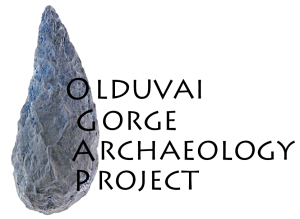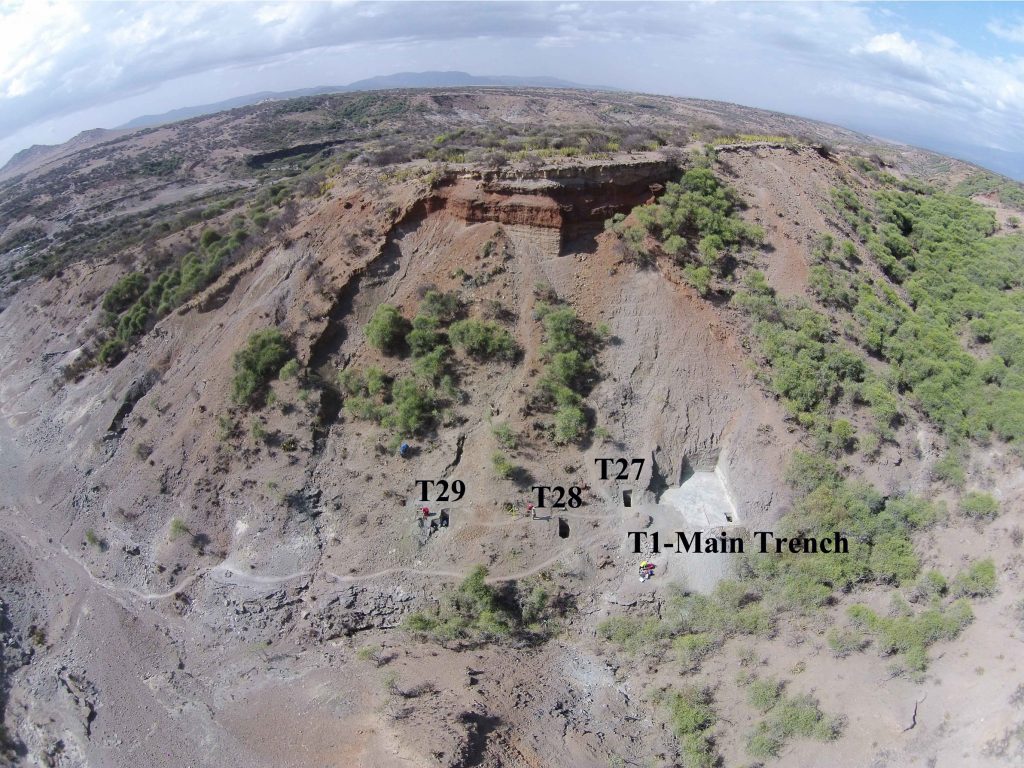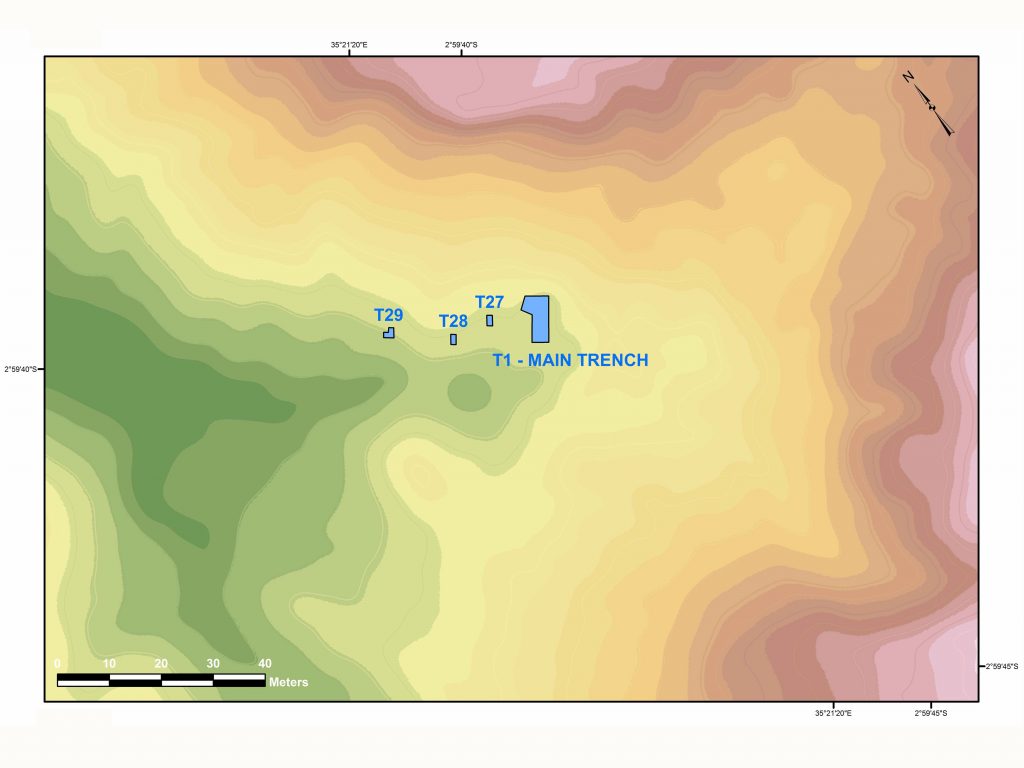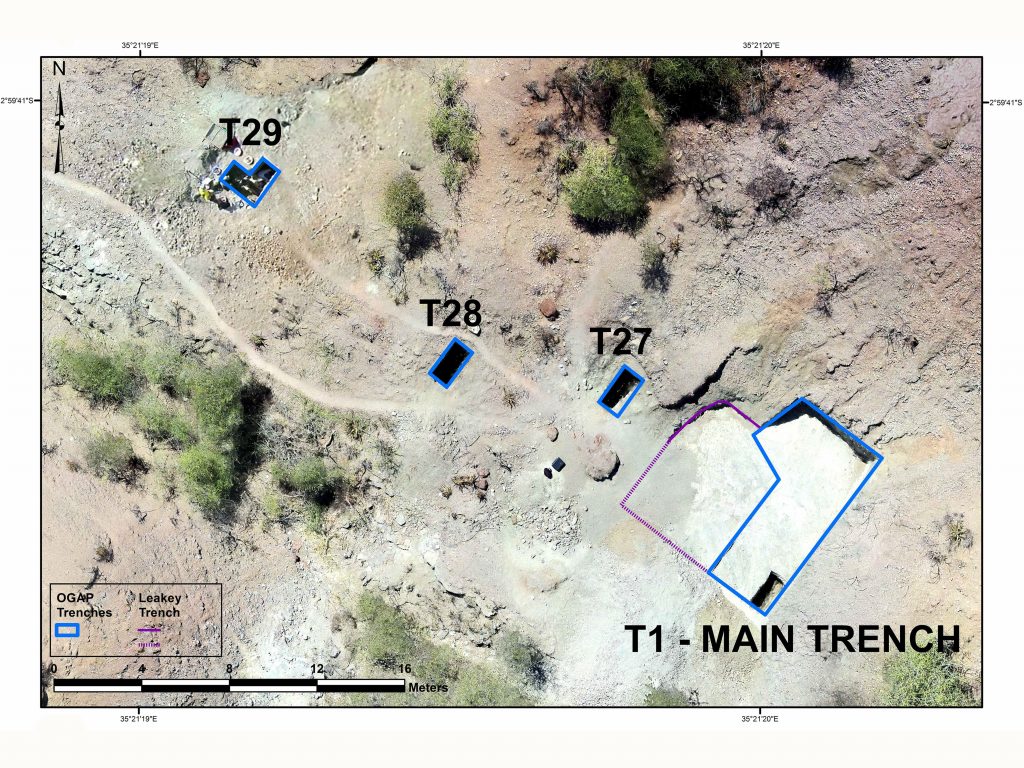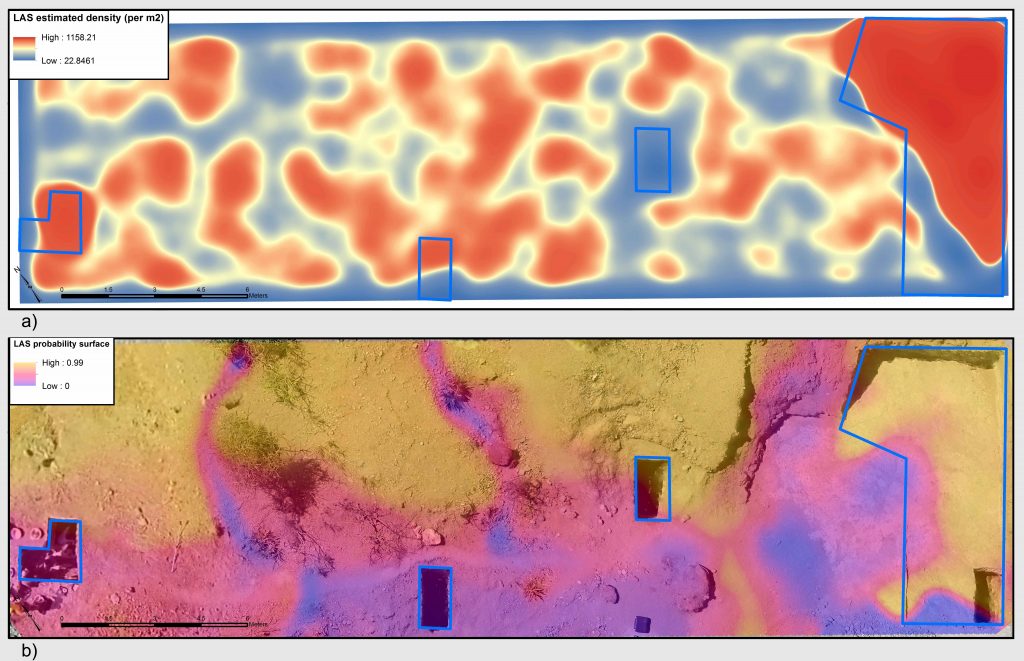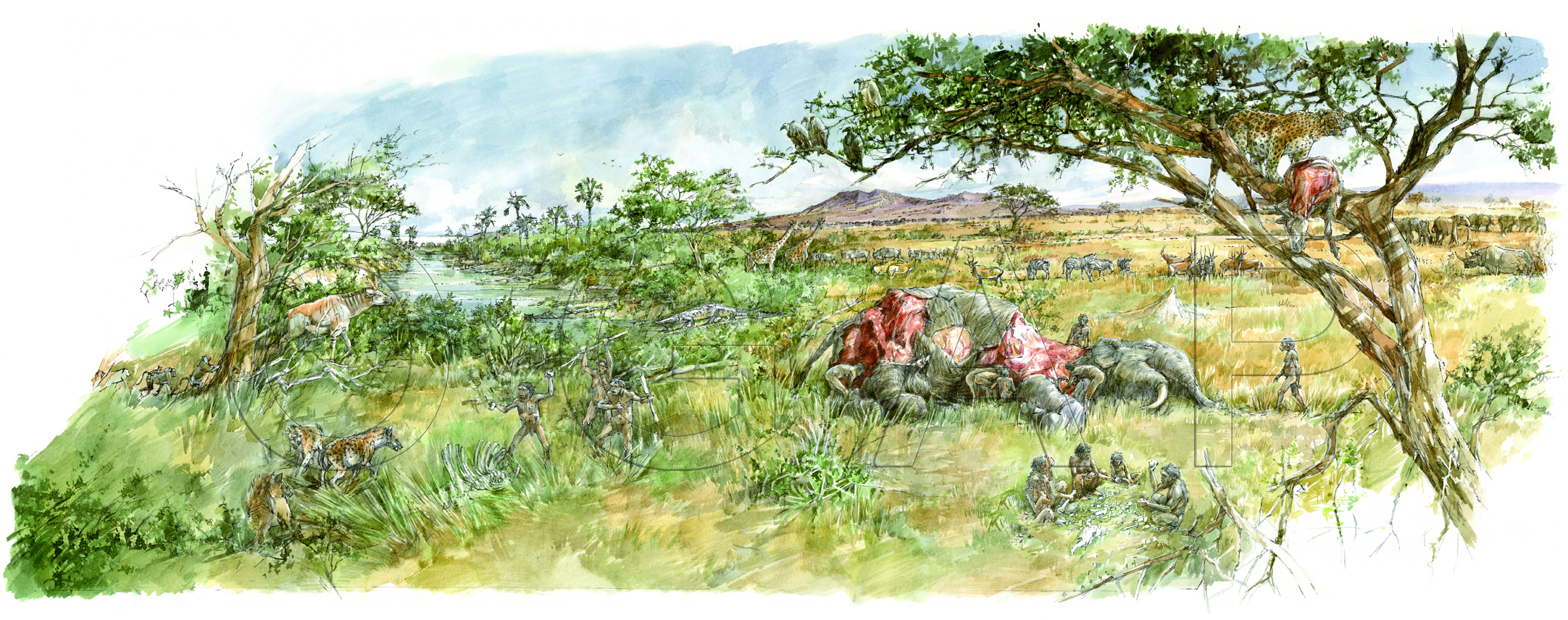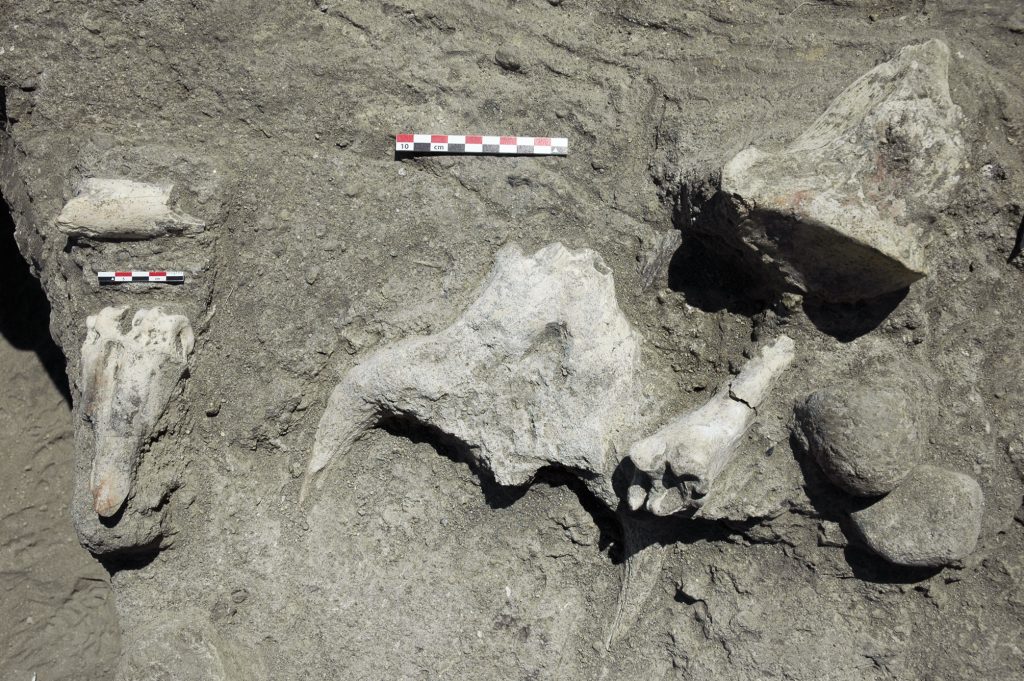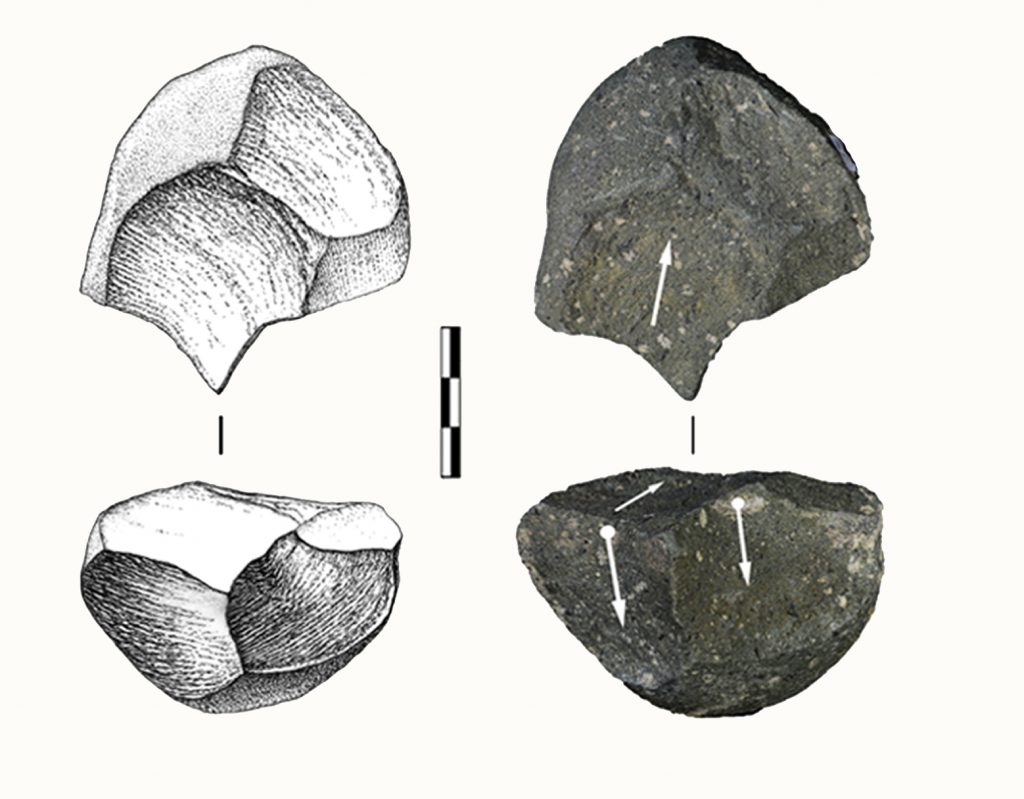The stone tool assemblage from HWK EE is substantially large, with over 18,000 pieces. Our results indicate that reduction sequences were generally short, flaking productivity was low, and knapping methods were largely simple and expedient, lacking the technical skills observed in other Oldowan assemblages. Nonetheless, knapping expediency and low productivity were accompanied by raw material selectivity and consistent presence of retouched artefacts.
HWK EE lava core.
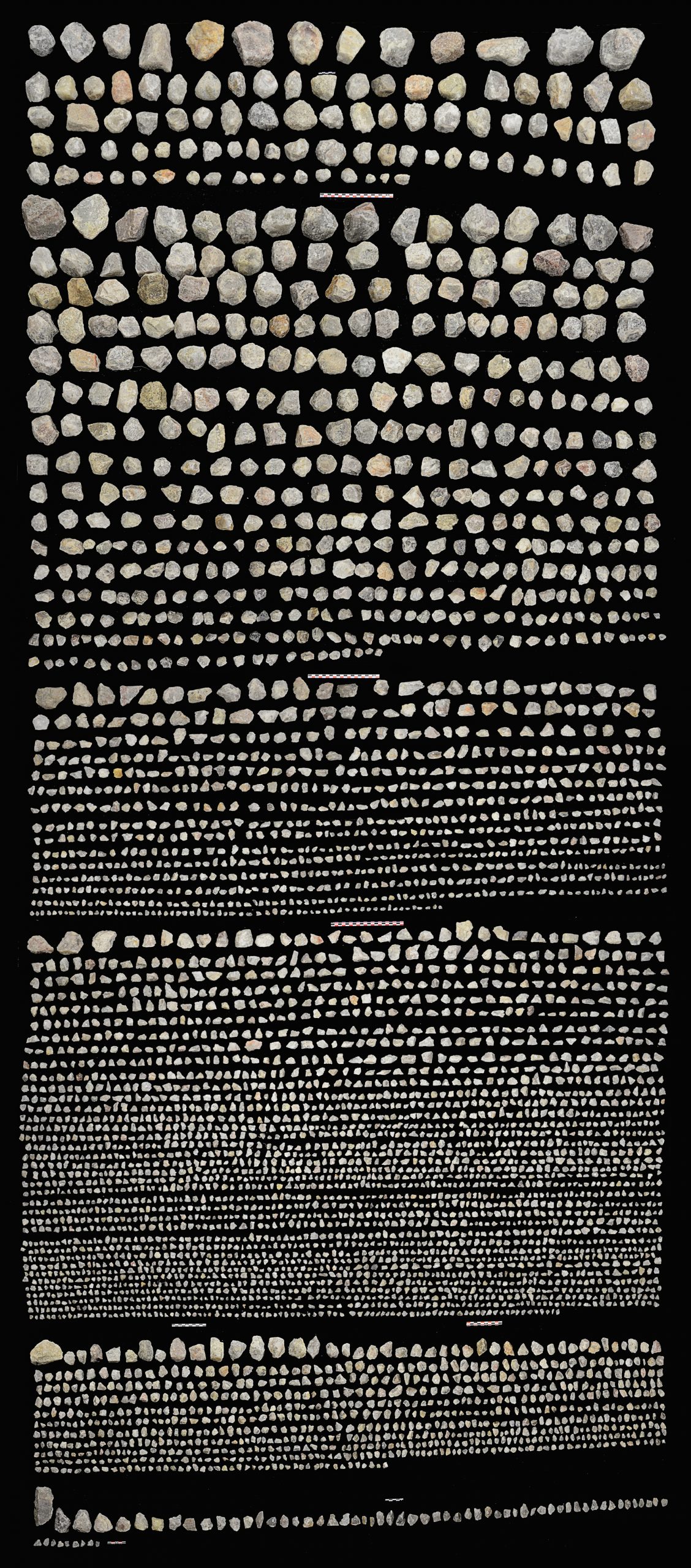
Quartzite stone tools from HWK EE.
